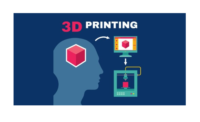
|
| BOBST CL 850 multi-technology duplex laminator |
Q: What is laminating and how does it contribute to the quality of flexible packaging films?
A: Laminating is the process through which two or more flexible packaging webs are joined together using a bonding agent. The substrates making up the webs may consist of films, papers or aluminum foils. The multi-layer composite structure can be produced either through a process using adhesives or by extrusion. The choice of the most suitable web-laminating process is mainly dictated by the end use of the product. A number of different technologies are available that cover the wide variety of applications in the food and non-food packaging industries.
Web lamination is used to improve the barrier properties of the packaging material in order to protect the packaged item and increase its shelf life. Typically flexible packaging laminates have three main functions: mechanical properties that improve the strength of the material by making it more resistant to tearing, punching etc. that protect it, especially during packaging, distribution and storage; the barrier properties that protect from outside deteriorating agents (i.e. light, moisture, gas, oxygen, pathogens and spoiling agents) and also prevent loss of the product qualities such as freshness and aroma in the case of food; and finally, the substrate sealability that hermetically closes the flexible packaging.
Q: Where does laminating fit in the flexible packaging film process?
A: Lamination usually takes place after the substrate printing, and before reel slitting and subsequent processing on form-fill-seal machines. In less common instances where the web is printed externally, lamination is carried out before the substrate printing.
Q: In what applications would laminating be ideal?
A: Basically all applications where the product needs to be protected and its shelf life extended. This applies to a huge variety of food products for human and animal consumption, but applications are almost as common for non-food products, which can require functional and highly technical film structures. In the food sections, these range for packaging of ready-to-eat products such as snacks, ice creams, biscuits, drinks or products such as coffee and frozen food, to applications such as boil-in-bag pouches or freezer-to-microwave products. In the non-food section, laminated materials may be used for insulation, solar panel backsheets and packaging of liquids for the cosmetic industries.
Q: Are you seeing any new developments or techniques in laminating? If so, what are you noticing?
A: The trend in the packaging industry is to use less material and generate less waste to dispose of while extending the product shelf life. Hence new developments are particularly strong on the part of film and other consumable products.
As a machine manufacturer, Bobst has been active for some years in testing the capabilities of our converting equipment to print and laminate profitably on new substrates derived from renewable sources, while continuing to improve the efficiency of the equipment in terms of a more eco-friendly, sustainable operation. For instance, in 2011 we held an open house dedicated to this topic whereby we ran demonstrations with the lamination of two compostable films using biodegradable adhesive. In terms of the coating technique most suitable with biodegradable materials, we carried out many tests using different coating methods in order to find the solution that better met two main requirements: coating the lower quantity of adhesive and achieving the best optical results of the laminated structure. The flexo coating system produced the best results with organic substrates and adhesives, achieving a speed that, although below the machine speed when handling conventional substrates, represented an excellent performance with the new materials.
Bobst North America Inc.
(973) 226-8625; www.bobst.com





